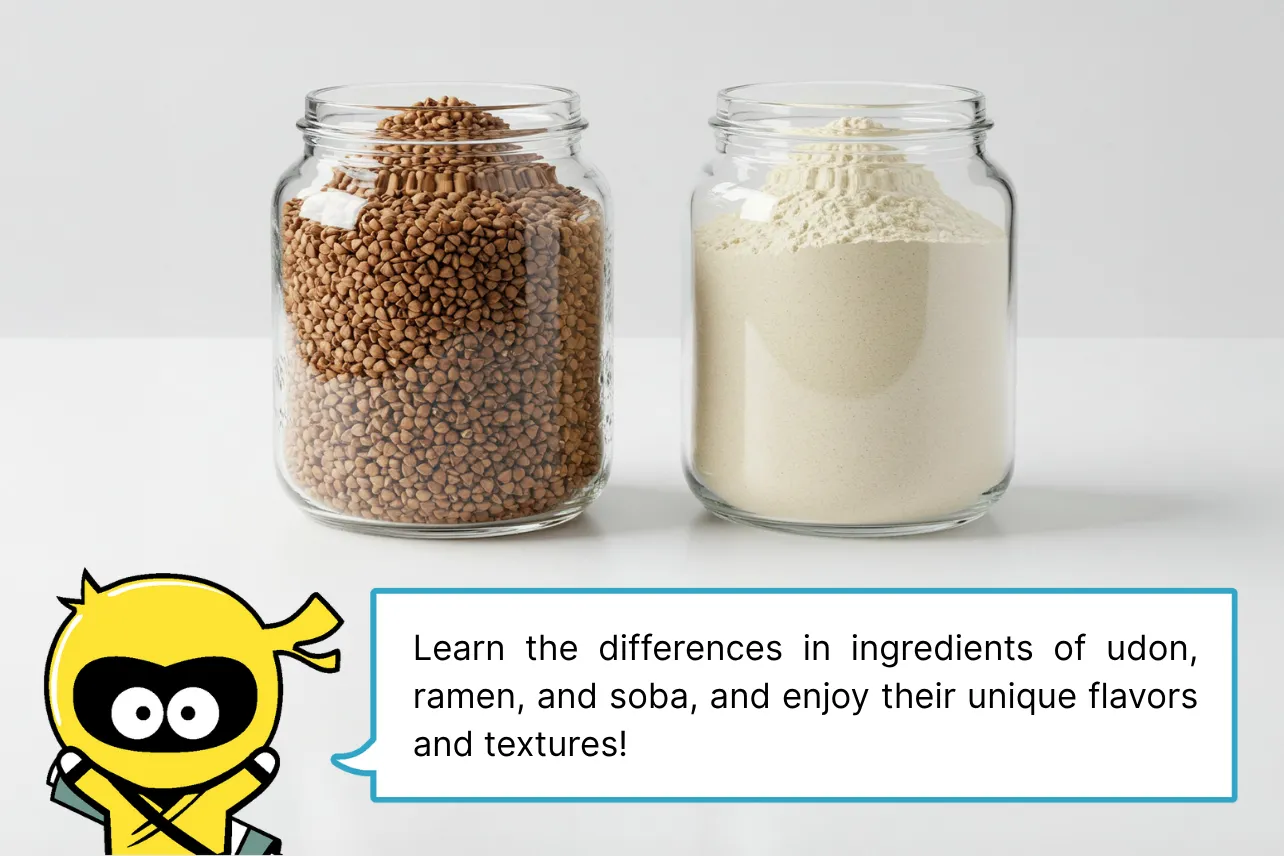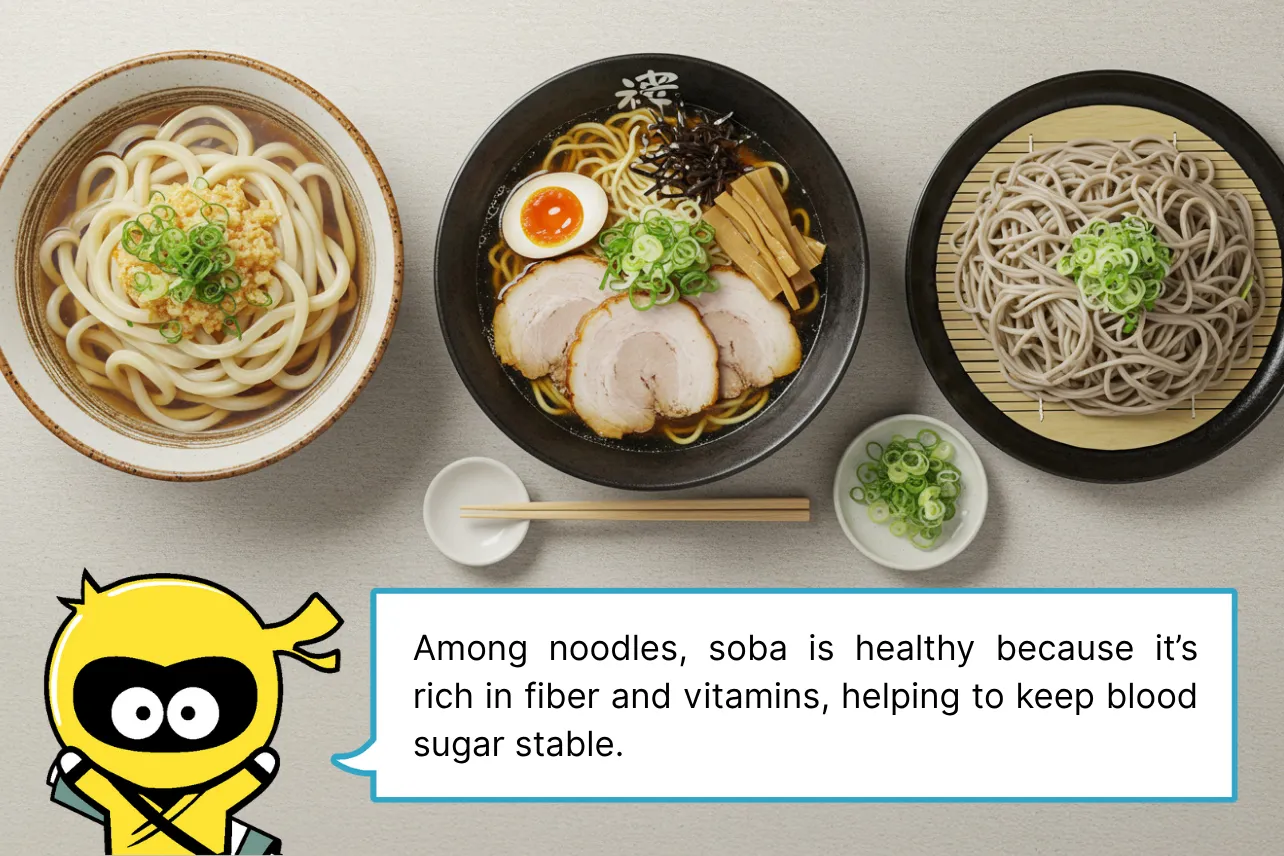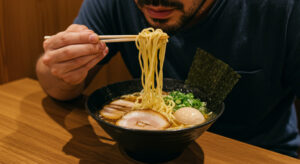

A Simple Guide to the Differences Between Udon, Ramen, and Soba
Udon, ramen, and soba are Japan’s three most iconic noodle dishes. Each differs in noodle thickness, color, texture, soup base, and even cultural history. For travelers unfamiliar with Japanese food, it’s easy to get confused. This guide breaks down the key features of each noodle in an easy-to-understand way. Knowing these differences will enhance your culinary experience while exploring Japan.
Comparing the Ingredients: Udon, Ramen, and Soba


While all are noodle dishes, udon, ramen, and soba use very different ingredients. These ingredients affect flavor, texture, and even nutritional value. Learning what goes into each noodle can help you make better food choices while traveling. Here’s a breakdown of their primary ingredients and unique characteristics:
- Udon: Made from wheat flour, water, and salt. Thick and chewy with a mild flavor. Easy to digest and great when you’re not feeling well.
- Ramen: Made from wheat flour with the addition of “kansui” (alkaline water). Yellowish in color with a springy texture that pairs perfectly with rich broth.
- Soba: Made from buckwheat flour. Some are blended with wheat flour (like 80/20 soba), while others are 100% buckwheat. Known for its nutty aroma and healthy reputation.
Soup Bases and Flavor Profiles
Ramen boasts a wide range of soup bases including miso, soy sauce, salt, and pork bone (tonkotsu), with strong regional variations. Udon is served in a lighter dashi-based broth made from seaweed and dried fish—milder in Kansai, richer in Kanto. Soba soup is subtle and minimal, enhancing the buckwheat flavor rather than overpowering it. Each soup style reflects the local palate and seasonal preferences.
Famous Regional Noodles in Japan
Each region in Japan has its own beloved noodle dishes. Sanuki Udon from Kagawa is known for its firm texture and draws noodle enthusiasts from across Japan. Sapporo is famous for miso ramen, while Hakata in Fukuoka is home to rich tonkotsu ramen. For soba lovers, Nagano’s Togakushi soba and Yamagata’s hearty Itasoba are must-tries. Sampling local noodles is one of the tastiest ways to explore Japan’s culture.
Which Noodle Is Healthiest?


If you’re watching calories or want a healthier option, soba is a top choice. Buckwheat flour is rich in fiber and B vitamins, and it’s known for having a low glycemic index. Udon is easy on the stomach, making it great when you need something gentle. Ramen tends to be heavier, especially depending on the broth and toppings, but there are lighter versions with more vegetables if you’re looking to balance flavor and nutrition.
How to Order and Noodle Shop Etiquette
In Japan, some noodle shops guide you to your seat first, while others use ticket vending machines at the entrance. If ordering directly, pointing to the menu is perfectly acceptable. Many shops are cash-only, so it’s wise to carry yen. And don’t worry about slurping—making noise while eating noodles is not rude in Japan. In fact, it’s a sign that you’re enjoying your meal!
Is Slurping Rude? Japanese Table Manners Explained
In many countries, slurping noodles is considered impolite. But in Japan, it’s not only accepted—it’s expected. Slurping soba or ramen shows appreciation for the food and helps cool the noodles. Locals don’t think twice about it. Trying it for yourself can make your dining experience feel more authentic, so don’t be shy—slurp away and enjoy like a local!
You might be interested in this
How to Use a Meal Ticket Machine
Many ramen and udon shops in Japan use a ticket machine system. Simply insert cash, choose your meal by pressing a button (often with pictures), and hand the ticket to the staff. Even if you can’t read Japanese, these machines are usually user-friendly. If you’re unsure, step aside and watch others or ask the staff for help. Once you get the hang of it, it’s a super-efficient way to order food.
How to Choose the Right Noodle While Traveling
If you’re not sure what to eat, choose a noodle dish that reflects the local specialty. On a cold day, go for miso ramen. In the heat, cold soba is refreshing. If your stomach is sensitive, udon is gentle and easy to digest. For quick meals, standing soba or udon shops are ideal. Match your meal to the weather, your schedule, or your mood—and enjoy Japan’s noodle culture to the fullest.




